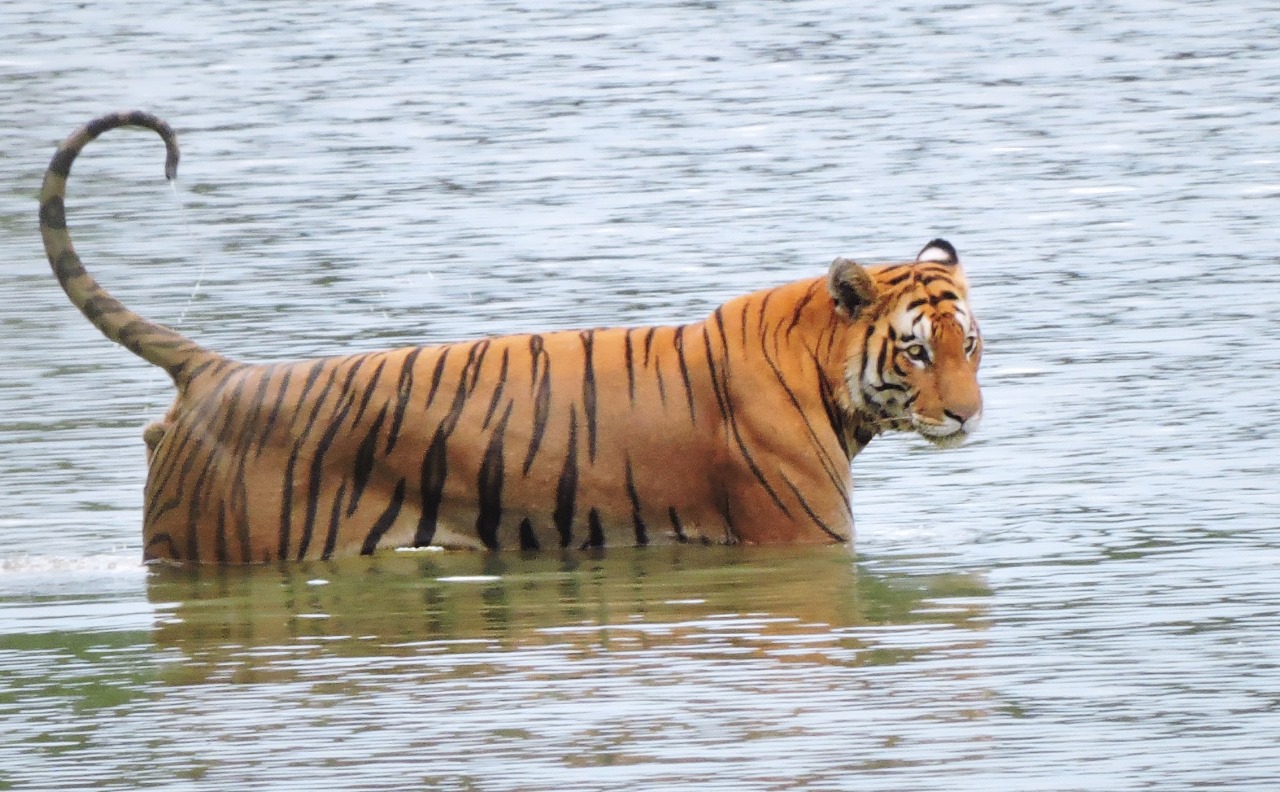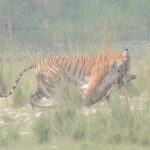
Walking Safari vs Jeep Safari in Bardia National Park
When you plan a trip to Bardia National Park, Nepal’s hidden wildlife paradise, you’ll face an exciting choice: should you explore on a walking safari or a Jeep safari? Both options promise unforgettable wildlife encounters, but they offer very different experiences.
In this guide, we compare walking safaris and Jeep safaris in terms of adventure, safety, wildlife sightings, and the overall thrill factor—helping you decide which Bardia National Park safari experience suits you best.
1. Walking Safari: Step Into the Wild
A walking safari in Bardia National Park places you right in the heart of the jungle. Led by skilled local guides and trackers, you walk along animal trails, riverbanks, and open grasslands, moving quietly through tiger and rhino territory. This slow and deliberate approach gives you a deep, immersive experience of nature.
Pros of Walking Safari:
-
Intimate connection with nature: Feel every sound, smell, and sign of the jungle around you.
-
Silent approach: Your quiet footsteps allow for closer encounters with shy animals like tigers, rhinos, and deer.
-
Learn tracking skills: Your guides teach you how to read animal tracks, spot signs like scratches or droppings, and predict animal movement.
Cons of Walking Safari:
-
Physical demands: You need moderate fitness to walk for several hours in humid conditions.
-
Limited coverage: On foot, you can only explore smaller sections of the park per day compared to a vehicle.
Excitement Level:
Walking safaris are thrilling and intense. The knowledge that a Bengal tiger or a one-horned rhinoceros might be just around the corner makes your heart race with every step.
2. Jeep Safari: Cover More Ground, Spot More Wildlife
A Jeep safari in Bardia National Park offers a different kind of adventure. Riding in an open 4×4, you can explore vast areas of the park within a few hours. Jeep safaris are perfect for spotting a variety of wildlife, including elusive species like the sloth bear, Gangetic dolphin, and the Bengal tiger.
Pros of Jeep Safari:
-
Greater coverage: Access remote areas that are too far to reach on foot.
-
Comfortable for all fitness levels: Sit back and enjoy the ride without the need for strenuous walking.
-
Good for photography: A vehicle offers a stable platform to set up cameras and capture wildlife moments.
Cons of Jeep Safari:
-
More noise: Vehicle engines can sometimes scare away shy animals.
-
Less intimacy: You may feel slightly detached from nature compared to being on foot.
Excitement Level:
Jeep safaris are exciting but slightly less intense than walking safaris. However, the ability to quickly follow animal sightings via radio calls can lead to dramatic moments, like rushing to a recent tiger spotting.
3. Types of Wildlife You May Encounter
Both safari styles offer excellent chances to see wildlife, but your experiences will vary:
Walking Safari Sightings:
-
Bengal tigers: Often spotted resting or patrolling jungle paths.
-
One-horned rhinoceroses: Frequently encountered in grasslands and riverbanks.
-
Spotted deer, swamp deer, and wild boar: Common in open spaces.
-
Exotic birds: Kingfishers, eagles, and hornbills often fly overhead.
Jeep Safari Sightings:
-
Bengal tigers: High chance, especially early morning or late afternoon.
-
Wild elephants: Herds crossing riverbeds or grazing in clearings.
-
Leopards: Occasionally spotted lounging in trees.
-
Sloth bears: Sighted in remote, rocky parts of the park.
-
Gharials and Gangetic dolphins: Visible along the Karnali River.
If your main goal is to maximize the number of species you see, a Jeep safari gives you the advantage. However, if you prefer a focused, sensory, and adrenaline-filled encounter, walking safaris steal the show.
4. Risks and Safety Considerations
Both safaris are safe when conducted with licensed guides, but they come with unique challenges:
Walking Safari Risks:
-
You must remain calm and follow guide instructions if encountering large animals.
-
Physical exertion can be tiring, especially in the heat.
Jeep Safari Risks:
-
Minor risks from off-road driving, especially after heavy rain.
-
Potentially less thrilling if wildlife sightings are low during your drive.
Bardia National Park prioritizes visitor safety. Whether walking or riding, trained guides monitor animal behavior and avoid unnecessary risks. Always trust their experience and advice during your safari.
5. Best Time for Safaris in Bardia National Park
The ideal time for both walking and Jeep safaris in Bardia National Park is from October to April. During these dry months:
-
Wildlife gathers around waterholes, increasing your chances of sightings.
-
The jungle is less dense, improving visibility for both walking and driving.
-
Comfortable temperatures make outdoor activities more enjoyable.
6. Which Safari Should You Choose?
Choose a Walking Safari if:
-
You crave an intimate, adrenaline-charged connection with nature.
-
You enjoy learning survival and tracking skills.
-
You seek unique, story-worthy adventures.
Choose a Jeep Safari if:
-
You want to see as much wildlife as possible in a short time.
-
You prefer comfort or are traveling with children or elderly companions.
-
You aim for excellent wildlife photography opportunities.
Pro Tip: For the ultimate experience, combine both safaris during your Bardia National Park tour. Start with a walking safari to feel the pulse of the jungle, then expand your exploration with a full-day Jeep safari.
Final Thoughts
Whether you choose the raw intensity of a walking safari or the sweeping exploration of a Jeep safari, Bardia National Park promises an unforgettable wildlife adventure. Each experience offers a different way to connect with Nepal’s incredible biodiversity, from the stealthy tiger to the majestic elephant.
Pack your spirit of adventure, book your Bardia National Park safari, and get ready to create memories that will last a lifetime.








